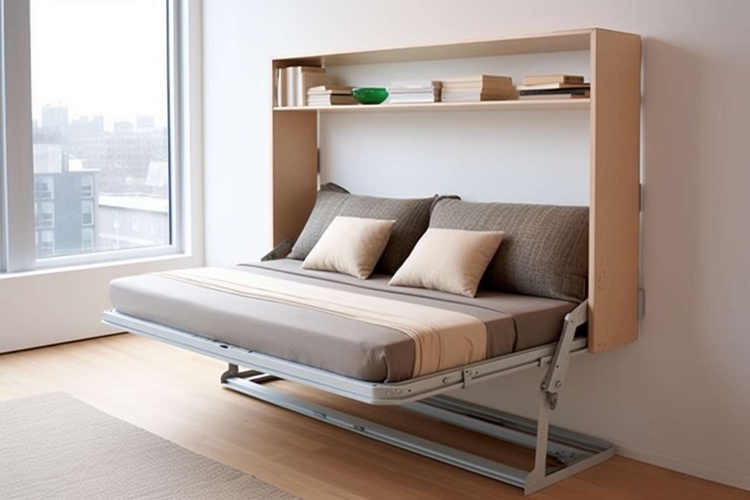Title: Micro-Apartments: The Future of Urban Living?
Introduction: In the ever-evolving landscape of real estate, a new trend is capturing the attention of city dwellers and investors alike: micro-apartments. These compact living spaces, typically under 400 square feet, are reshaping urban housing markets. With 54% of the world's population now residing in cities, the demand for affordable, centrally-located housing has skyrocketed, making micro-apartments an increasingly attractive solution.

Designing for Efficiency: Maximizing Limited Space
The success of micro-apartments lies in their innovative design approaches. Architects and interior designers are pushing the boundaries of spatial efficiency, creating living spaces that feel larger than their square footage suggests. Multi-functional furniture, such as Murphy beds and convertible tables, plays a crucial role in these designs. Vertical space utilization, including loft beds and floor-to-ceiling storage, maximizes every inch of available area. High ceilings and large windows are often incorporated to create a sense of openness, while clever lighting solutions enhance the perception of space.
Economic Implications for Renters and Investors
From an economic standpoint, micro-apartments present a double-edged sword. For renters, particularly young professionals and students, these units offer an affordable entry point into desirable urban neighborhoods that would otherwise be out of reach. The lower absolute rent, despite a higher price per square foot, allows tenants to live in prime locations without breaking the bank. For investors and developers, micro-apartments can yield higher returns per square foot compared to traditional apartments. However, the initial development costs can be higher due to the need for high-quality finishes and innovative design solutions to make the small spaces livable.
Regulatory Challenges and Urban Planning Considerations
The proliferation of micro-apartments has not been without controversy, leading to regulatory challenges in many cities. Zoning laws and building codes often struggle to keep pace with this new housing typology. Some cities have implemented minimum size requirements for apartments, effectively banning micro-units. Others have embraced the trend, recognizing its potential to address housing shortages. Urban planners are grappling with the long-term implications of micro-apartment developments on neighborhood dynamics, infrastructure demands, and quality of life. Balancing the need for affordable housing with concerns about overcrowding and livability remains a complex issue for policymakers.
The Psychological Impact of Living Small
While micro-apartments offer practical solutions to urban housing challenges, the psychological impact of living in such small spaces cannot be overlooked. Studies have shown mixed results regarding the effects of compact living on mental health and well-being. Some residents report increased stress and feelings of claustrophobia, while others appreciate the minimalist lifestyle and reduced environmental footprint. The success of micro-apartment living often depends on individual preferences, lifestyle choices, and the availability of communal spaces within the building or neighborhood to complement the private living areas.
Future Trends and Innovations in Micro-Living
As the micro-apartment trend continues to evolve, new innovations are emerging to enhance the living experience in small spaces. Smart home technology is playing an increasingly important role, with automated systems controlling lighting, temperature, and even furniture configurations to maximize space efficiency. Some developers are experimenting with modular designs that allow for customization and potential expansion of units over time. Community-focused amenities, such as shared workspaces, lounges, and rooftop gardens, are becoming standard features in micro-apartment buildings, offering residents additional space and social interaction opportunities beyond their private units.
Market Outlook and Investment Potential
The future of micro-apartments in the real estate market looks promising, driven by ongoing urbanization trends and the need for affordable housing solutions. While the COVID-19 pandemic temporarily shifted some focus away from dense urban living, the long-term demand for centrally located, affordable housing remains strong. Investors considering micro-apartments should carefully analyze local market conditions, regulatory environments, and demographic trends. Cities with high housing costs, strong job markets, and a large population of young professionals are likely to see continued growth in this sector. However, the success of micro-apartment investments will depend on thoughtful design, strategic location selection, and the ability to create a sense of community within these compact living environments.
In conclusion, micro-apartments represent a significant shift in urban housing paradigms, offering both challenges and opportunities for residents, developers, and city planners. As this trend continues to evolve, it will play a crucial role in shaping the future of urban living, addressing affordability concerns, and redefining our relationship with space in increasingly crowded cities. The success of micro-apartments will ultimately depend on their ability to provide not just shelter, but a high quality of life in the heart of vibrant urban communities.





